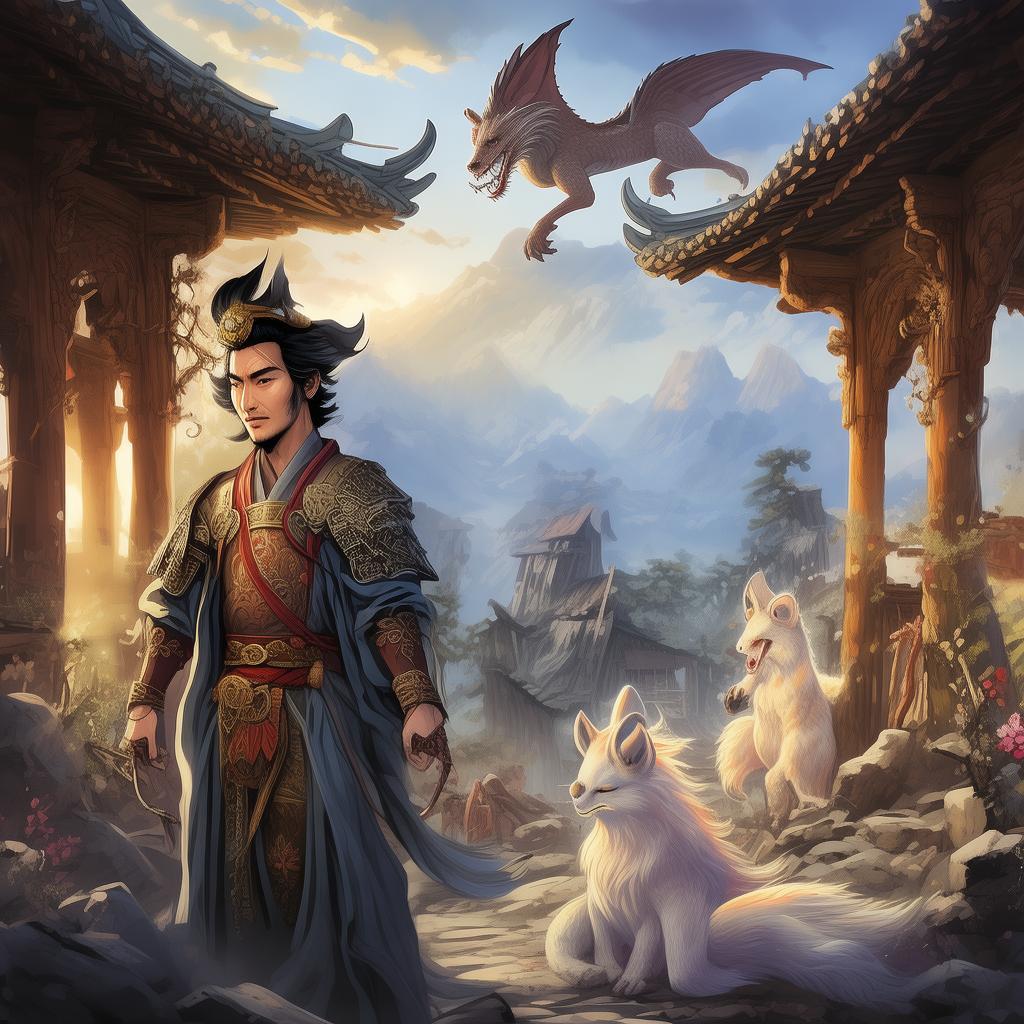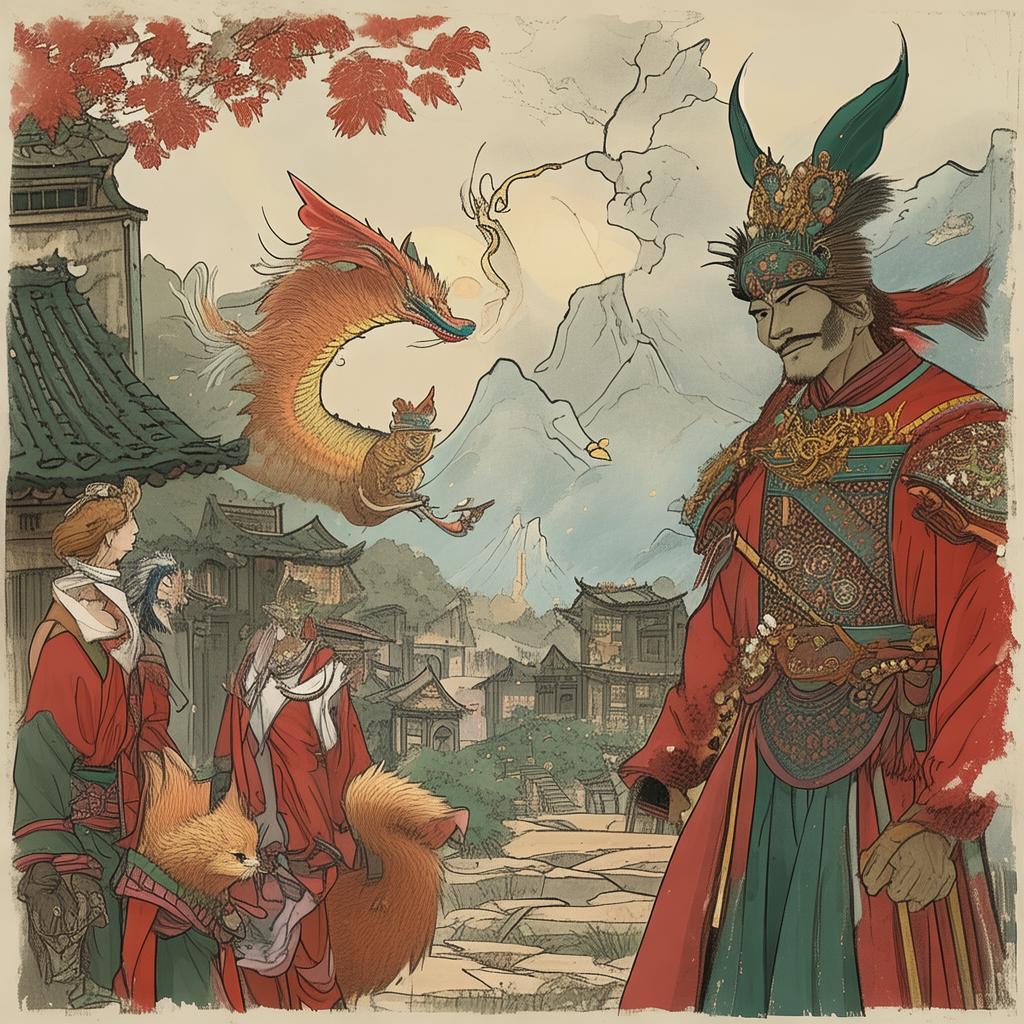The Great Pot's Requiem: A Tale of Unity and Fracture
In the heart of the ancient village of Lushan, nestled between towering mountains and a serene river, there stood a pot of legend. This was no ordinary pot; it was the Great Pot, a symbol of the village's unity and prosperity. For generations, the Great Pot's Dance had been the climax of the annual festival, a ritual that bound the villagers together in celebration and shared purpose.
The dance was simple yet profound. Villagers would gather around the pot, each contributing a drop of water, a grain of rice, or a piece of their own spirit. As the pot filled, it became a living entity, a vessel of collective will and emotion. It was said that the pot's dance was a reflection of the village's heart, and its rhythm a testament to their unity.
This year, however, the festival was tinged with unease. The pot, which had always danced to the rhythm of the villagers' laughter and joy, now seemed to resist the ritual. It would not fill as it should, and its dance was disjointed, as if it were fighting against the very forces that called it to life.
The villagers whispered among themselves, their fears growing like the shadows that crept across the village at dusk. Some said it was a sign of misfortune, a warning of the divisions that had begun to crack the community's foundation. Others claimed it was a challenge, a test of their unity, a dance that could only be completed with the pot's cooperation.
In the midst of this uncertainty, a young girl named Mei, whose heart was as pure as the mountain streams that surrounded Lushan, took it upon herself to discover the truth. Mei had always been close to the pot, her spirit intertwined with its rhythm. She felt the pot's resistance, a foreign sensation that seemed to pull her toward the heart of the village's division.

Mei's journey began in the ancient temple that overlooked the village, where the elders had gathered to discuss the pot's strange behavior. Among them was the village elder, an old man whose eyes held the wisdom of the ages. He spoke of the pot's origins, a tale of a time when the village was one, bound by a common purpose and shared beliefs.
As Mei listened, she realized that the pot's dance was not just a symbol of unity; it was a mirror reflecting the village's soul. And as the pot's dance faltered, so too did the village's spirit. The elder spoke of a time when the village was divided, when factions fought for power and control, and the pot remained silent, a witness to the chaos.
Determined to restore the pot's dance and, by extension, the village's unity, Mei embarked on a quest to heal the fractures that had crept into their lives. She traveled to the edges of the village, where the divisions were most pronounced, speaking with those who had grown estranged from their neighbors.
Mei learned of old feuds, forgotten promises, and hidden resentments that had festered for years. She listened to tales of betrayal and misunderstanding, and she found that the pot's resistance was a manifestation of the village's own reluctance to confront these wounds.
With each story she heard, Mei felt the weight of the village's history pressing upon her. Yet, she also felt a growing sense of purpose. She knew that the pot's dance could only be restored through the healing of the village's divisions.
Returning to the temple, Mei shared her findings with the elders. Together, they devised a plan to bridge the gaps between the factions. They organized a series of community meetings, where villagers could openly discuss their differences and work toward a common understanding.
The meetings were tense, filled with emotions that had long been suppressed. But as the villagers shared their stories and listened to one another, they began to see the humanity in their neighbors. Old grievances were forgotten, and new friendships were forged.
As the festival approached, the pot was placed in the center of the village square. The villagers gathered around, each holding a small vessel containing their contribution. Mei stood before them, her voice echoing through the square.
"Today, we gather not just to celebrate our unity, but to honor the diversity that makes us strong," she said. "Let us pour our spirits into the pot, not as individuals, but as a community, bound by our shared journey and our collective dreams."
The villagers nodded in agreement, and one by one, they approached the pot. They spoke of their hopes for the village, their fears, and their dreams. As the pot filled, it began to dance, its rhythm growing stronger with each drop of water, each grain of rice, each shared story.
The Great Pot's Dance was complete, and the village's spirit was restored. The pot no longer resisted, but danced with a joyous abandon, a testament to the village's newfound unity.
As the festival concluded, the villagers looked upon the Great Pot, now a beacon of hope and unity. They knew that the pot's dance was not just a ritual, but a reminder of the power of community, the strength found in unity, and the resilience of the human spirit.
And so, the tale of the Great Pot's Requiem became a legend, a story that would be told for generations, a tale of how a village had faced its divisions and emerged stronger, a testament to the enduring power of unity.
✨ Original Statement ✨
All articles published on this website (including but not limited to text, images, videos, and other content) are original or authorized for reposting and are protected by relevant laws. Without the explicit written permission of this website, no individual or organization may copy, modify, repost, or use the content for commercial purposes.
If you need to quote or cooperate, please contact this site for authorization. We reserve the right to pursue legal responsibility for any unauthorized use.
Hereby declared.









